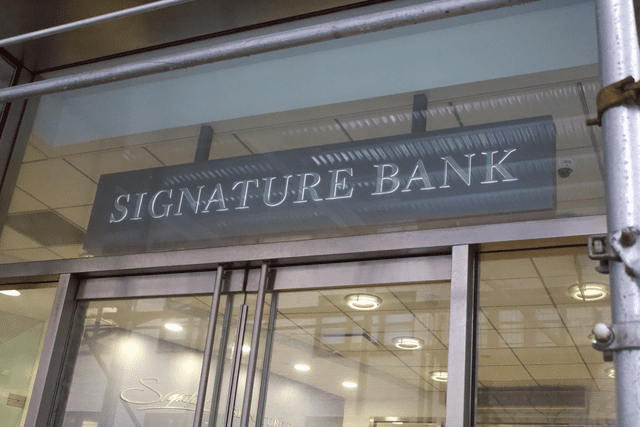
New York Community Bank Sunday agreed to buy a large portion of Manhattan-based Signature Bank, which state regulators closed last week, for $2.7 billion, according to the Federal Deposit Insurance Corp.
As of Monday, March 20, Signature’s 40 branches, which includes one in Great Neck, will begin operating as Flagstar bank, a subsidiary of New York Community Bank.
Signature customers will not need to make any changes to their banking as part of the change, according to the FDIC.
Included in the deal is $38.4 billion of Signature’s assets, which also accounts for $12.9 billion in loans and was over a third of the bank’s total assets when it collapsed. The FDIC will maintain receivership, a court-appointed mechanism to help creditors recover funds, of approximately $60 billion in loans that will be sold at a later date, according to a press release.
The Mid-Size Bank Coalition of America, which includes New York-based bank IDB Bank, Apple Bank, Signature, Popular Bank, and New York Community Bank, among others, asked the FDIC to fully insure all deposits over the next two years, as reported by Bloomberg News.
Signature is the second bank to fail in recent weeks, following Silicon Valley Bank in California, which had its assets seized by regulators after depositors hurried to withdraw money after fear and concerns over the banks’ health.
Signature’s collapse, which has offices in New York, Connecticut, California, Nevada and North Carolina, is the third largest in U.S. banking history, according to multiple reports.
The Town of North Hempstead has $1.2 million in deposits with Signature, which the town has used a restricted reserve fund with since 2010, according to Supervisor Jennifer DeSena. The supervisor added last week that there is no reason to believe any taxpayer funds are in jeopardy as part of the collapse.
The collapse is estimated to cost the FDIC’s Deposit Insurance Fund approximately $2.5 billion, paid for by assessments on banks and interest earned on funds invested in U.S. government obligations, which will be specified once the receivership is terminated.






